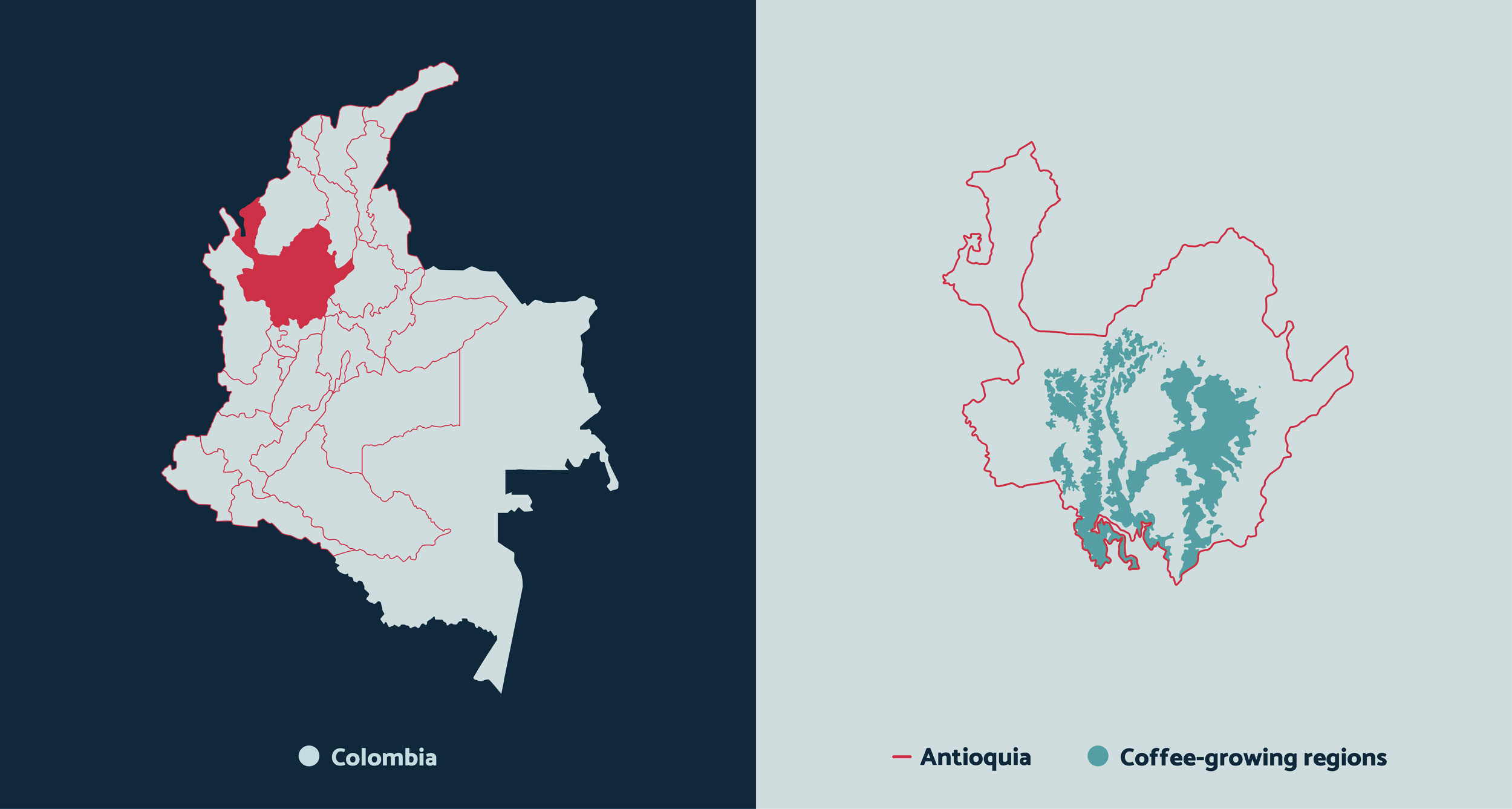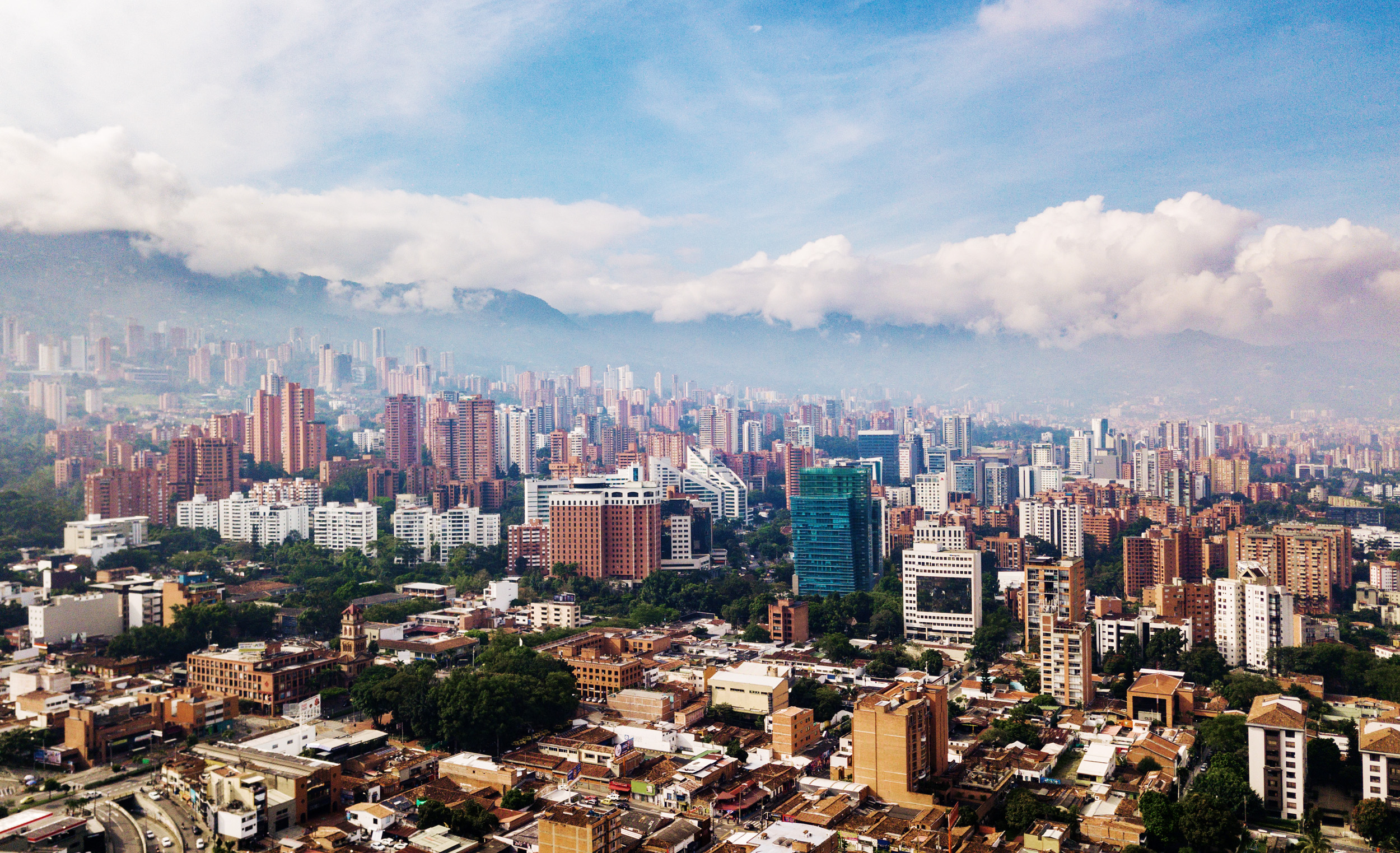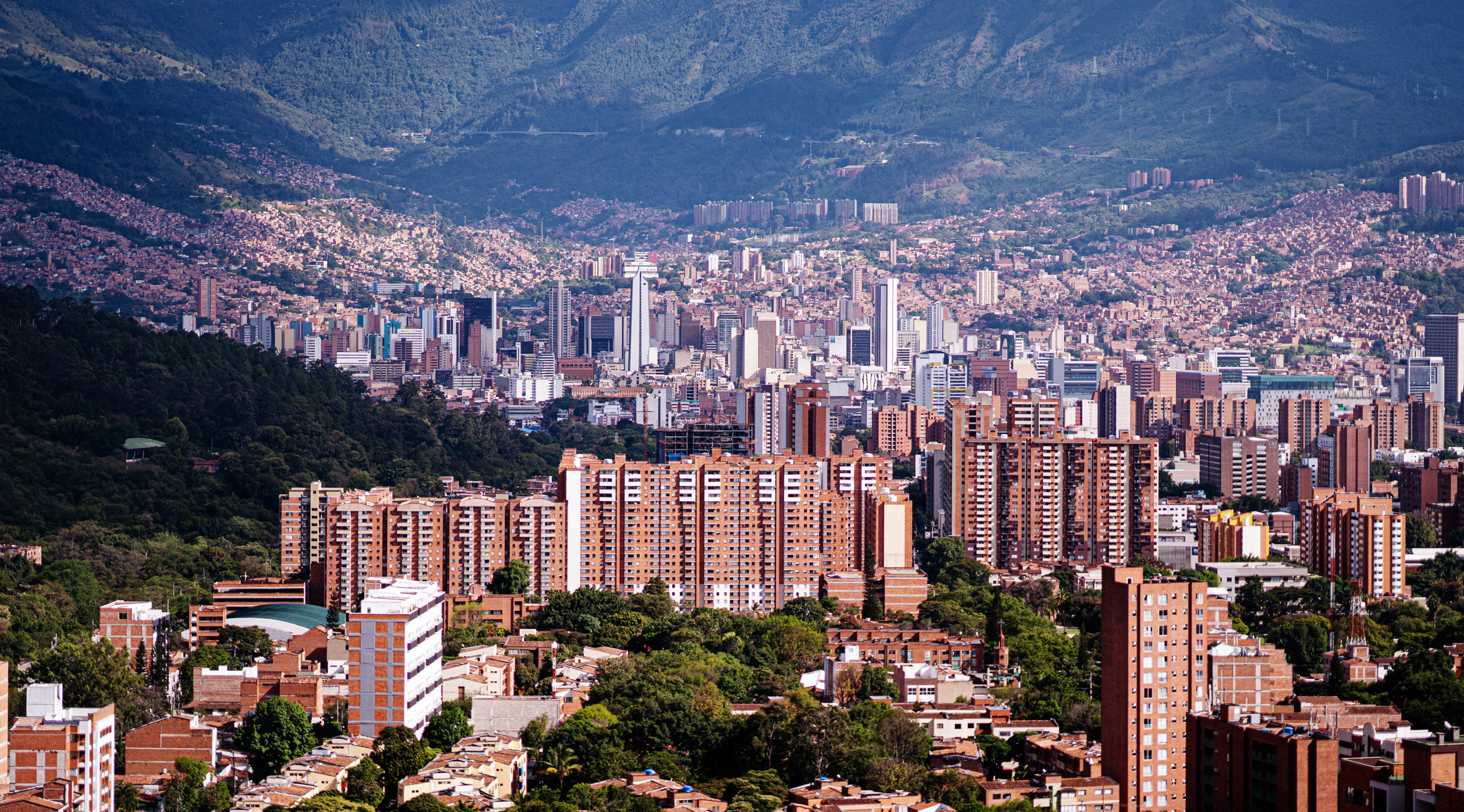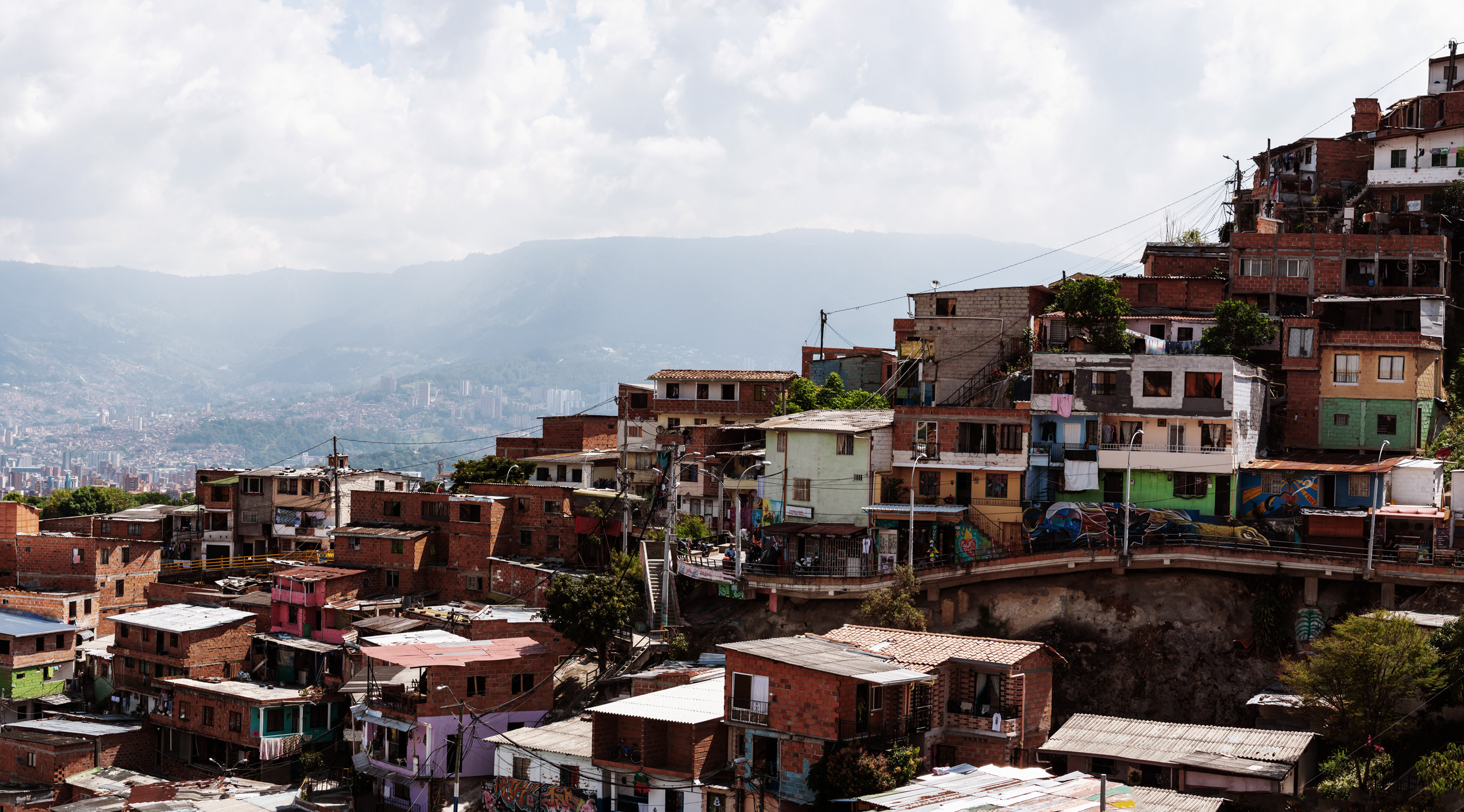 Coffee-growing areas of Antioquia
Coffee-growing areas of Antioquia
Harvest: September–December (main crop), April–June (mitaca)
Elevation: 1,300–2,200 metres (4,300–7,200 feet) above sea level
Rainfall: 1,000–2,000 millimetres (39–79 inches)
Temperature: 18°C–24°C (64°F–75°F)
Antioquia lies in the northwest of Colombia. This mountainous department, dominated by the central and western cordilleras of the Andes, also includes a small strip of Caribbean coastline. It is the second-most-populous department after Cundinamarca, and Antioquia’s capital, Medellín, is Colombia’s second-largest city.
Medellín, Antioquia’s capital and Colombia’s second-largest city. The city is tucked into the Aburrá Valley at 1,495 metres (4,905 feet) above sea level, in the central cordillera of the Andes.
At the beginning of the colonial era, the economy of the region was based on gold mining (Ocampo and Botero 2000). Sporadic records dating back to 1808 refer to coffee plants grown in the department, but only for medicinal use (Mejía et al 2017). Commercial coffee production in Antioquia, first attempted in 1861 (FNC 2014), grew rapidly during the first half of the twentieth century. Subsequent migration of Antioqueño coffee producers was instrumental in spreading coffee production to other parts of the country (Mejía et al 2017).
Today, Antioquia is Colombia’s second-biggest coffee-growing region after Huila. As of 2021, Antioquia had 116,000 hectares planted with coffee (FNC 2022), which produce 2.1 million bags per year, about 15 percent of Colombia’s total (FNC 2020).
 A coffee farm near Jericó, Antioquia
A coffee farm near Jericó, Antioquia
Antioquia is home to around 79,000 coffee-growing families, who typically cultivate coffee alongside other crops on smallholdings, with an average farm size of just 1.55 hectares (about 4 acres) (FNC 2022). The vast majority process their coffee on the farm and then sell their parchment via cooperatives (Robaina Rodríguez et al 2017).


